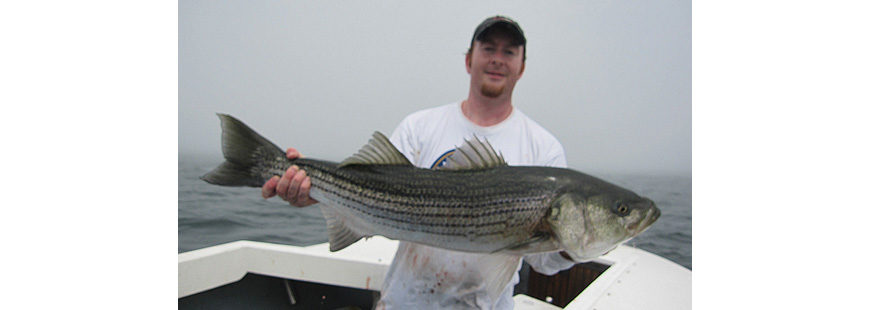Photo: Eric Brazer
Current fisheries management is influenced by both science and politics, and yet one approach is clearly more beneficial to the success of our fisheries than the other. Science identifies facts that lead to conclusions being drawn. Politics, on the other hand, identifies a conclusion that encourages the finding of facts to support it. One process can be quantified, validated, and lives in the open. The other is subjective, arbitrary, and thrives behind closed doors.
Thanks to the successes of the Magnuson-Stevens Fishery Conservation and Management Act (Magnuson-Stevens Act) – the bipartisan backbone of our nation’s fishery law – fishermen have become some of the staunchest advocates for science. Fishermen and scientists team up to collect real, verifiable data on our nation’s fisheries, which are used to inform rules and regulations. Better science equals better management, with some of the best science being generated through cooperative partnerships between PhDs and the salty captains that spend most of their lives at sea.
The Magnuson-Stevens Act has helped rebuild 41 stocks since 2000; of the 474 stocks NMFS has data for, 84% are not overfished and 91% are not undergoing overfishing. The number of stocks in trouble (overfished or experiencing overfishing) has near an all-time low while the value of our nation’s fisheries and seafood supply chain continues to grow. And because science doesn’t prefer one sector over another, the overwhelming success of the Act is not limited to commercial fisheries. Healthy fish stocks mean increased access and economic growth for all sectors. For instance, U.S. commercial fishermen land 9.6 billion pounds of seafood annually, worth approximately $52 billion, and the commercial fishing industry supports 700,000 jobs.
Take the Gulf of Mexico for example, an embroiled region at the intersection of science and politics. On one hand, science-based management has nearly tripled the size of the red snapper quota in the last 10 years. All fishermen – commercial, charter, and recreational – can now take three times as many red snapper out of the Gulf as they could before without endangering the future health of the population. Furthermore, of the stocks in the Gulf that are managed under Magnuson-Stevens Act, zero are experiencing overfishing. This effectively means that not one of these species is being harvested faster than they can reproduce. Science helped make this success story possible.
On the other hand, state and federal politics regularly bleed into our Gulf fishery management process. Every Gulf state has set its recreational red snapper season longer than what is justified by the science, and just recently, leaked memos revealed that the U.S. Department of Commerce colluded with state and federal managers to intentionally violate Magnuson-Stevens Act. The public was intentionally blocked from participating in this process and no scientific justification has been made available.
Over the last year, fishermen from the Gulf of Mexico, Alaska and New England have all testified in front of the House and Senate committees on Magnuson-Stevens Act reauthorization. Each of these fishermen lauded science-based management and raised strong concerns with recent proposals to politicize and erode this process. When fishermen take time off the water, don the clothes they usually only wear for weddings and funerals, and travel thousands of miles to testify in front of a Congressional committee, they hope their leaders will listen. After all, these fishermen are fighting for their businesses, their families, their communities, and their way of life.
The fish that fishermen spend their lives chasing belong to every citizen in this country, and we owe it to them and the next generation of fishermen and seafood consumers to ensure that every decision we make is grounded in science. Politics has no place in the scientific process nor in our nation’s fisheries.



This is the same Eric Brazer who is charging commercial fishermen $3.65/pound to lease these same fish that already belong to those commercial fishermen? At a recent Gulf Council meeting, Mr. Brazer was espousing the virtues of his new quota bank where he claimed that he was “helping” new entrants by leasing them their fish to catch. A SAFMC council member in attendance asked Mr. Brazer how much he was charging these new entrants – Mr. Brazer, apparently stunned by the directness of the question hem hawed around and tried to get away with not answering the gentleman from Florida, saying; “market price”. The SAFMC council member asked him what “market price” was and Mr. Brazer again fidgeted and said he couldn’t remember off the top of his head. The SAFMC council member persisted and asked Mr. Brazer to give a rough idea of “market price” and Mr. Brazer blurted out $3.30 to $3.50/pound. I know for a fact that Mr. Brazer had just prior to the meeting leased a commercial catch sharecropper red snapper for $3.65/pound and he knew exactly what he was charging but obviously did not want to divulge just how much he was gouging the hard working commercial fishermen for the Public Trust Resource they already own. How is charging $3.65/pound to other Americans “helping” anyone other than Mr. Brazer and his cronies?